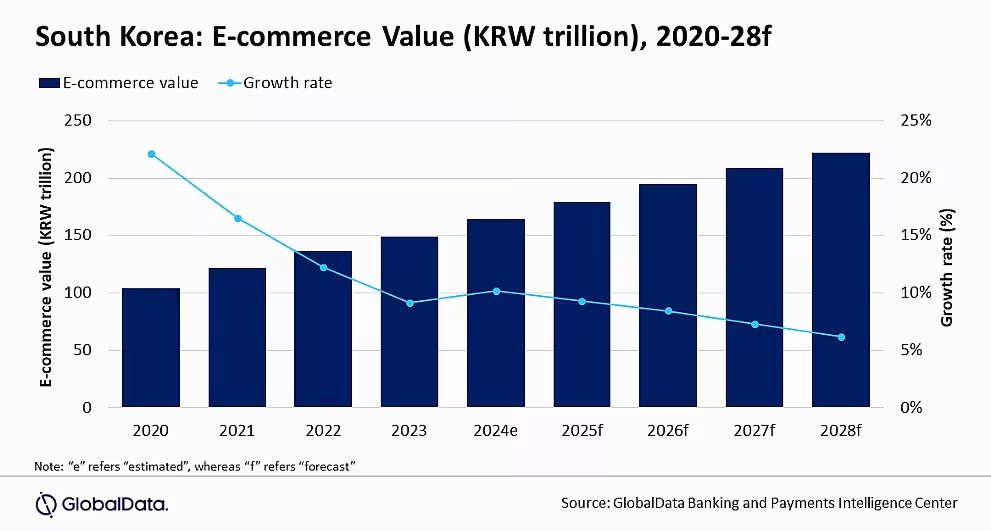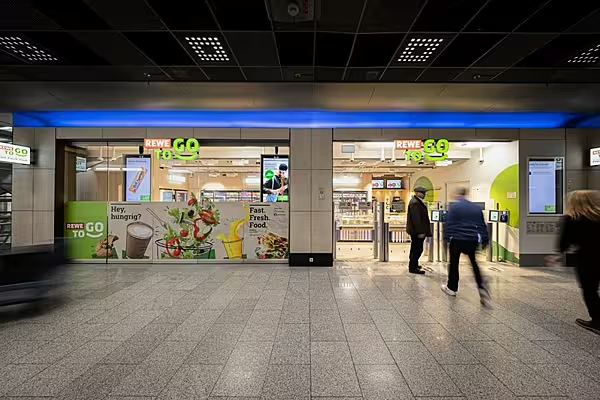The e-commerce market in South Korea is set to reach a value of KRW222.1 trillion (€149.9 billion) by 2028, growing at a CAGR of 7.8% over the next four years, according to GlobalData.
The latest E-Commerce Analytics report from GlobalData indicates that the South Korean e-commerce market is currently the fourth largest – in terms of value – in Asia Pacific, behind China, Japan, and India, but is also growing at a rapid pace. Between 2020 and 2023, the market grew at a CAGR of 12.6% to be valued at KRW149.1 trillion (€100.6 billion) in 2023.
'Robust' Market
“South Korea boasts a robust e-commerce market, supported by high-speed internet infrastructure, secure online payment options, and a growing trust among consumers in the realm of online shopping," commented Shivani Gupta, senior banking and payments analyst at GlobalData.
"Furthermore, the country has witnessed significant digital retail advancements, including the utilisation of drones and robots for deliveries, AI-driven personalisation, and the emergence of live stream shopping.”
According to GlobalData, e-commerce businesses in South Korea are also increasingly using live streaming to reach a larger consumer base. In June 2023, YouTube launched its inaugural online shopping channel in the country, were products are live streamed in the Korean language, while earlier this year, it partnered with e-commerce platform Coupang, on a feature that enables content creators to tag products from affiliated brands or shopping sites, receiving a commission for each successful purchase.
Payment Methods
In the country's e-commerce market, payment cards dominate as the preferred method of payment, holding a combined market share of 54.3% in 2023, according to GlobalData’s 2023 Financial Services Consumer Survey. However, alternative payment methods are also on the increase, with platforms such as Samsung Pay, Naver Pay, and China UnionPay gaining popularity.
“South Korea’s e-commerce market is poised for rapid expansion in the immediate future," Gupta added. "This can be attributed to the growing consumer preference for online channels, improving payment infrastructure, proliferation of alternative payment solutions and growing popularity of innovative online shopping modes.”











